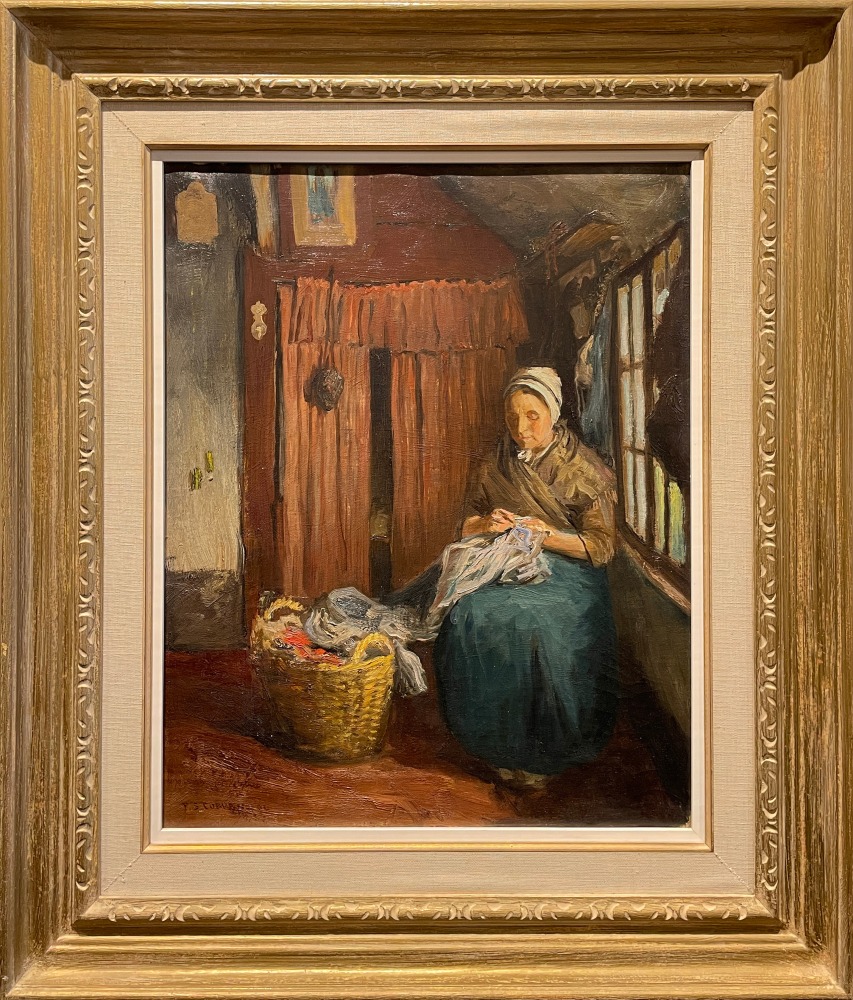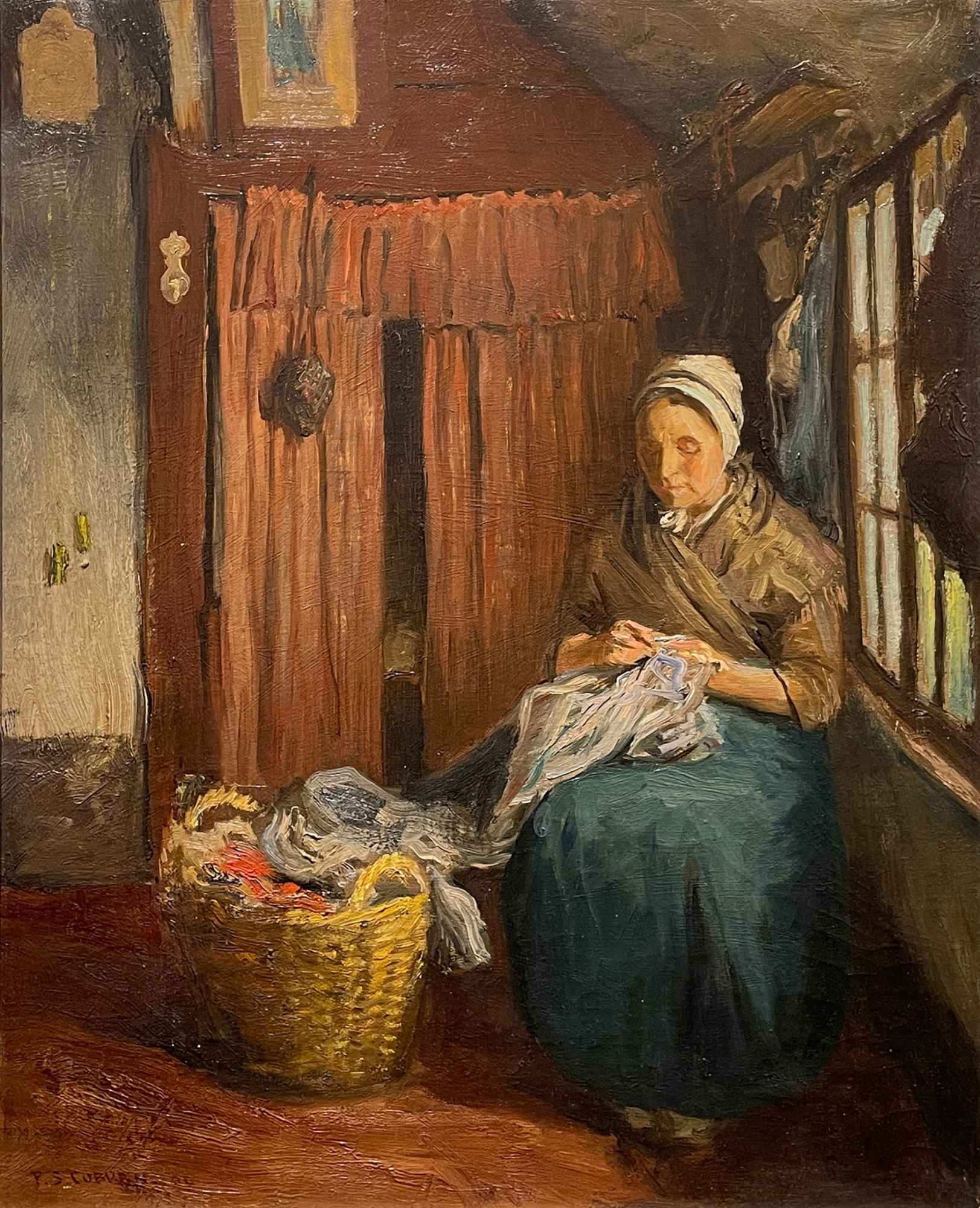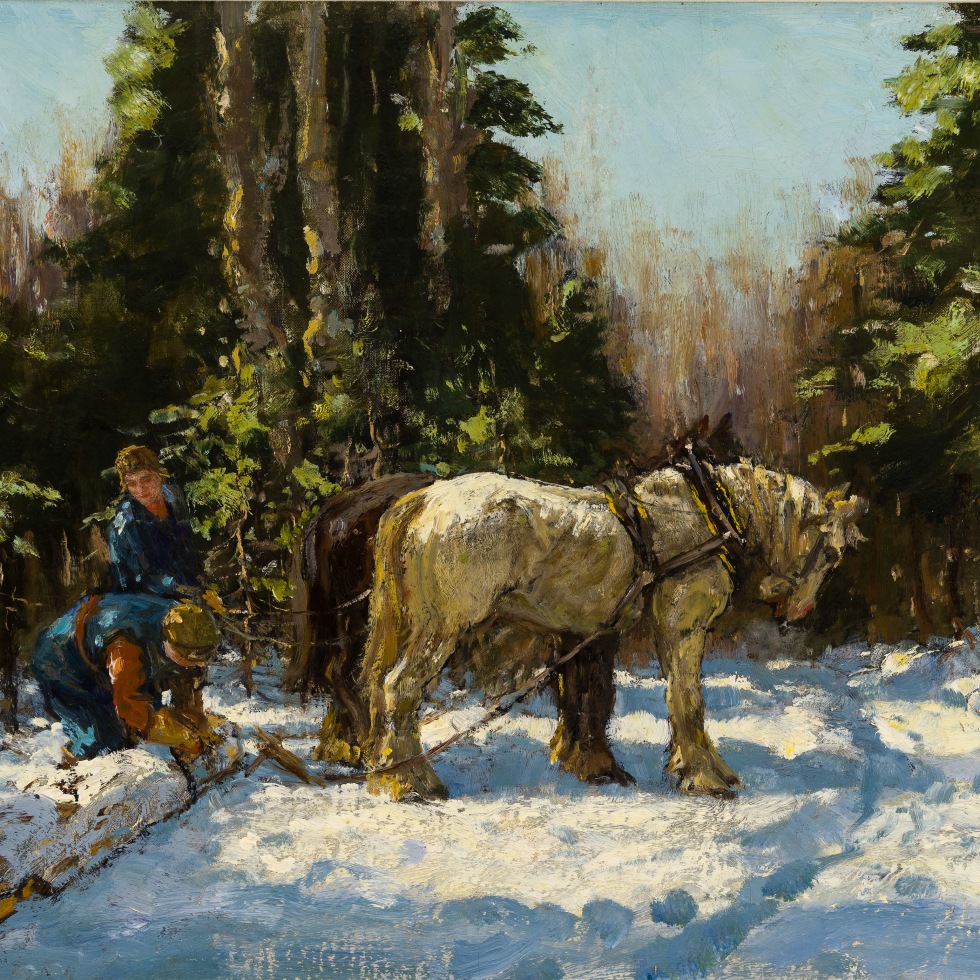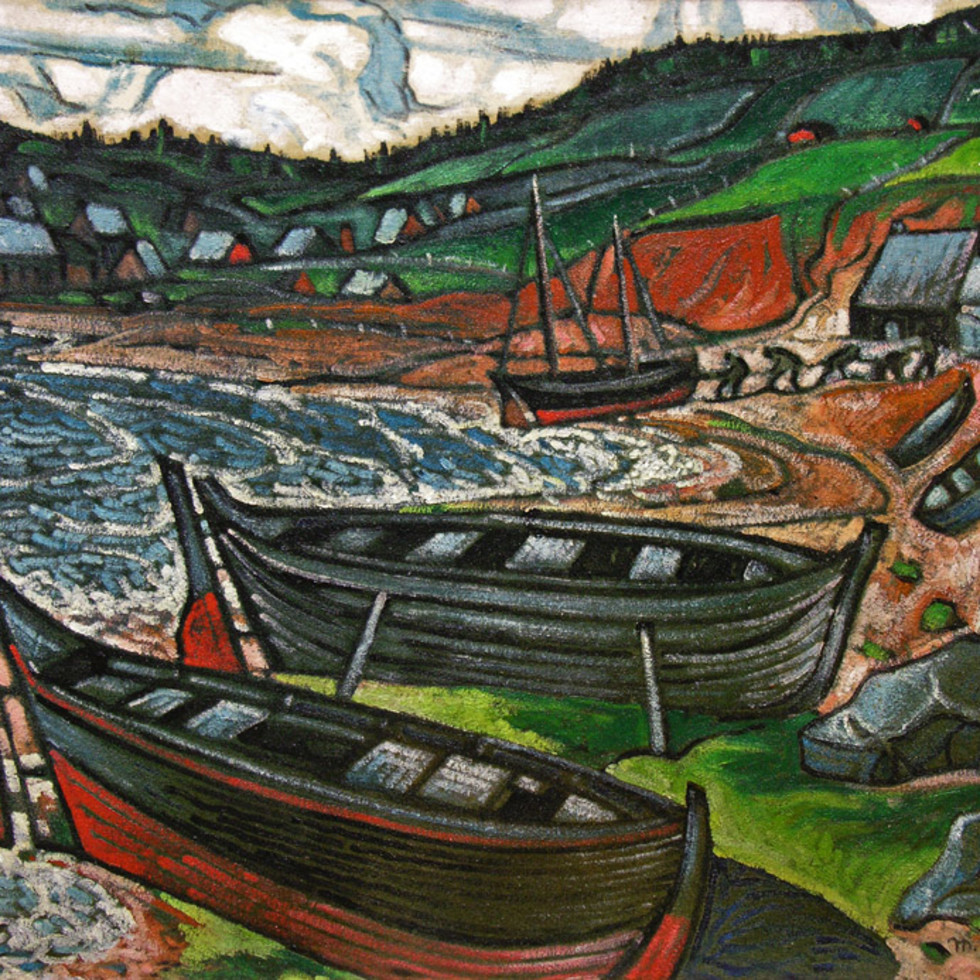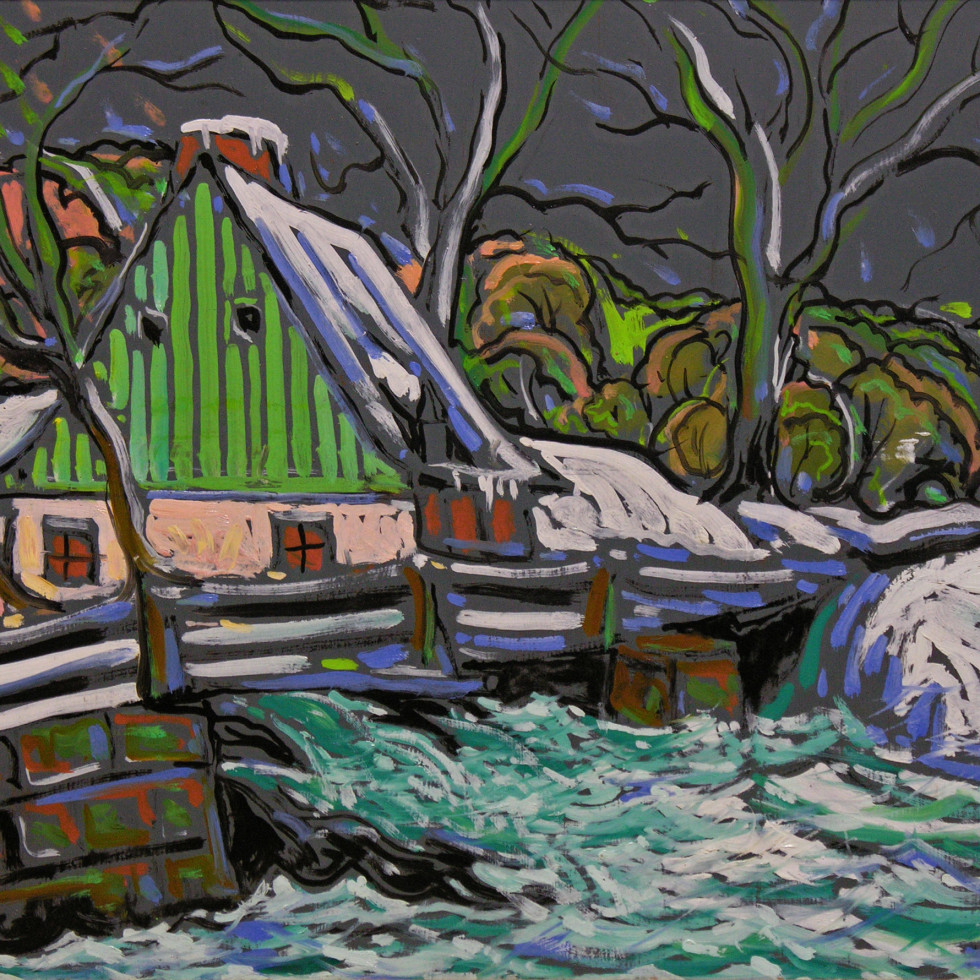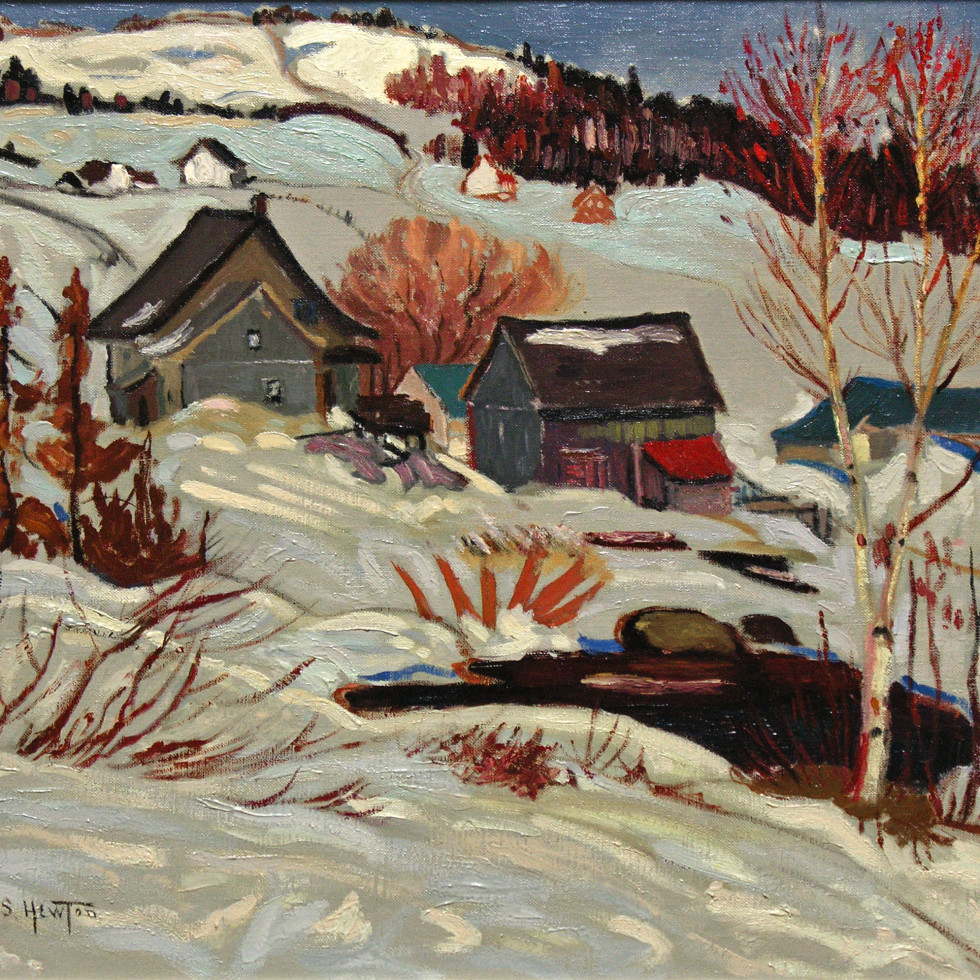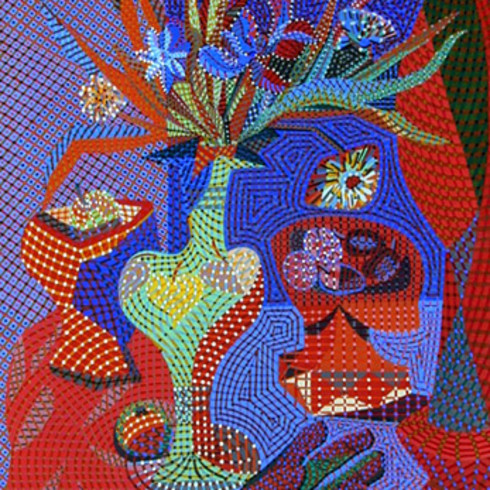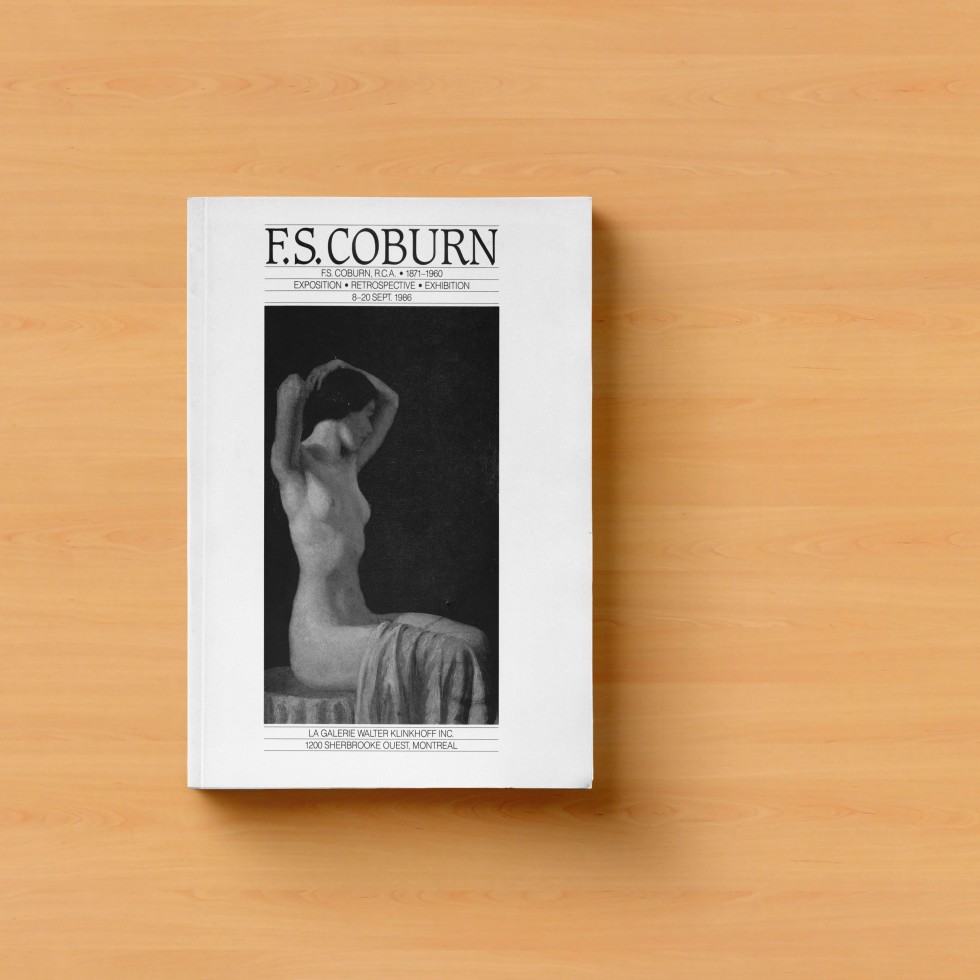Interior Scene, Woman Knitting, 1903 (circa)
Oil on canvas
20 x 16 in
50.8 x 40.6 cm
50.8 x 40.6 cm
This painting is available to view at our Montreal gallery.
$6,000
Inscriptions
signed, 'F.S. Coburn' (lower left)Provenance
Continental Galleries Inc., MontrealPrivate collection, Vermont
Describing another and different interior by Coburn in his book Frederick Simpson Coburn, Gerald Stevens wrote the following:
This is an example of a somewhat rare series of interiors painted by the artist. [...]The art of the day tended towards interiors in the Dutch manner, and in painting them Mr. Coburn was continuing his research for palette, technique and subject.
The technique is broad and free. Single strokes brush in an arm, the skirt, the leg of the table, the sill of the window, and whole sections of the background. A brush , heavily loaded with pure pigment, slashes across the board and, reversing, continues the stroke. In this process flecks of blues, reds, whites and viridian greens are intermingled in tonal harmonies. It has the deceptive facility of an artist whose mind’s eye could foresee the result, and who knew so well how to draw that he did not need to suggest the ‘pictorial’ aspect of the painting. [1]
By 1903 Coburn had trained extensively and was an accomplished talent. As a 16 year old he had attended The Montreal Council of Arts and Manufacturers School . This led to commissions to do drawings for advertisements that were subsequently published in The Dominion Illustrated. Young Coburn then taught back at his college before going to New York City where he attended the Carl Hecker School of Art . Then, with the encouragement of Mr Hecker in the spring of 1891 Coburn left for Europe for more art study.
Unlike many Canadians who went directly to Paris, Coburn first enrolled at the Berlin Academy prior to heading to Paris where at age of only 22 he was studying in the studio of Jean-Leon Gérome. During his years of work and study at Gerome's studio, Coburn actively pursued illustration commissions for numerous publications eg Harper's Magazine, The Monthly Illustrator . His niece Evelyn Coburn notes in her outstanding publication, F S Coburn, Beyond the Landscape that "The quantity of work Coburn was producing for Canadian and American publishers necessitated his regular return to North America. " [2]
Among Coburn's best known illustrations are those he did to accompany William Henry Drummond's "The Habitant and other French Canadian Poems" which was published in 1897 while Coburn was studying at London's Slade School of Art.
After the Slade School he relocated to Antwerp to now study at Belgium's National Higher Institute for Fine Arts, lodging at a studio rented by an architect whose daughter , Malvina, Coburn would marry a few years later. Coburn's ability as an illustrator were of a quality that the American publisher G P Putnam commissioned him to work on Washington Irving' s Rip Van Winkle & Sleepy Hollow followed by two Charles Dickens' works, one , A Christmas Carol and then an edition of Edgar Allan Poe's poems, finally completed by 1902.
With this important illustration and the related schedules of publication behind him Coburn made time to resume his painting in Belgium and Holland where his particular interests were the painting s of Hague School artists. It is precisely at this juncture that Coburn executed our painting. Evelyn Coburn wrote,
“Discussing one of these Dutch interiors with me later in his life, he explained, ‘I stayed in that little cottage in Holland for a time. Through that narrow, open doorway behind the peasant woman, who, incidentally, was a deaf mute, is where the cattle were kept. The heat from the animals helped to heat the cottage.'” [3]
The interest to Coburn and the high level artistry is evident in his treatment of light entering the cottage and its reaction on his knitter and throughout, on to the bare wall beyond.
We find here an important painting to complement Coburn's recognition as a winter painter of his neighbours logging or traveling in the Upper Melbourne region of Quebec.
_________
[1] Gerald Stevens, Frederick Simpson Coburn (Toronto: The Ryerson Press, 1958), p.38.
[2] Evelyn Lloyd Coburn, F.S. Coburn Beyond the Landscape (Ontario: The Boston Mills Press, 1996), 36.
[3] Ibid., 51.
This is an example of a somewhat rare series of interiors painted by the artist. [...]The art of the day tended towards interiors in the Dutch manner, and in painting them Mr. Coburn was continuing his research for palette, technique and subject.
The technique is broad and free. Single strokes brush in an arm, the skirt, the leg of the table, the sill of the window, and whole sections of the background. A brush , heavily loaded with pure pigment, slashes across the board and, reversing, continues the stroke. In this process flecks of blues, reds, whites and viridian greens are intermingled in tonal harmonies. It has the deceptive facility of an artist whose mind’s eye could foresee the result, and who knew so well how to draw that he did not need to suggest the ‘pictorial’ aspect of the painting. [1]
By 1903 Coburn had trained extensively and was an accomplished talent. As a 16 year old he had attended The Montreal Council of Arts and Manufacturers School . This led to commissions to do drawings for advertisements that were subsequently published in The Dominion Illustrated. Young Coburn then taught back at his college before going to New York City where he attended the Carl Hecker School of Art . Then, with the encouragement of Mr Hecker in the spring of 1891 Coburn left for Europe for more art study.
Unlike many Canadians who went directly to Paris, Coburn first enrolled at the Berlin Academy prior to heading to Paris where at age of only 22 he was studying in the studio of Jean-Leon Gérome. During his years of work and study at Gerome's studio, Coburn actively pursued illustration commissions for numerous publications eg Harper's Magazine, The Monthly Illustrator . His niece Evelyn Coburn notes in her outstanding publication, F S Coburn, Beyond the Landscape that "The quantity of work Coburn was producing for Canadian and American publishers necessitated his regular return to North America. " [2]
Among Coburn's best known illustrations are those he did to accompany William Henry Drummond's "The Habitant and other French Canadian Poems" which was published in 1897 while Coburn was studying at London's Slade School of Art.
After the Slade School he relocated to Antwerp to now study at Belgium's National Higher Institute for Fine Arts, lodging at a studio rented by an architect whose daughter , Malvina, Coburn would marry a few years later. Coburn's ability as an illustrator were of a quality that the American publisher G P Putnam commissioned him to work on Washington Irving' s Rip Van Winkle & Sleepy Hollow followed by two Charles Dickens' works, one , A Christmas Carol and then an edition of Edgar Allan Poe's poems, finally completed by 1902.
With this important illustration and the related schedules of publication behind him Coburn made time to resume his painting in Belgium and Holland where his particular interests were the painting s of Hague School artists. It is precisely at this juncture that Coburn executed our painting. Evelyn Coburn wrote,
“Discussing one of these Dutch interiors with me later in his life, he explained, ‘I stayed in that little cottage in Holland for a time. Through that narrow, open doorway behind the peasant woman, who, incidentally, was a deaf mute, is where the cattle were kept. The heat from the animals helped to heat the cottage.'” [3]
The interest to Coburn and the high level artistry is evident in his treatment of light entering the cottage and its reaction on his knitter and throughout, on to the bare wall beyond.
We find here an important painting to complement Coburn's recognition as a winter painter of his neighbours logging or traveling in the Upper Melbourne region of Quebec.
_________
[1] Gerald Stevens, Frederick Simpson Coburn (Toronto: The Ryerson Press, 1958), p.38.
[2] Evelyn Lloyd Coburn, F.S. Coburn Beyond the Landscape (Ontario: The Boston Mills Press, 1996), 36.
[3] Ibid., 51.
2
of 2



